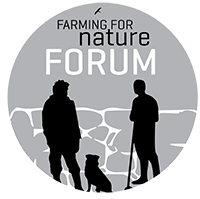Bird – Wild
‘How to Entice Barn Owls to your Farm?’
Paul Moore
They’re known as “the farmer’s friend” because they eat rodents such as wood mice, pygmy shrews and rats. But barn owls are struggling in Ireland – there’s been a 50% decline in the last 25 years. How can farmers help to restore barn owls to their land? Wildlife expert & tillage farmer, Paul Moore, explains how he brought them back to his 140-acre farm in Midleton, Cork. This is a 14-minute podcast from the Groundtips series. To listen just click below, then like, share, review.
Barn Owls still need our help and there is much that farmers can do.
Go rodenticide free In one study, over 80% of Irish Barn Owls that were tested after being found dead as road casualties had traces of rat poison in their blood. This is from birds feeding on dying or sluggish rats and mice that have eaten poison. Using other methods of control such as cage traps or break traps should all be considered and always adhere to the Responsible use of Rodenticides code of practice.
Check your farmyard hygiene is also of critical importance, preventing rodent access to feedstuffs is the best control method!
Provide a nest box Barn Owls nest in cavities in old buildings or mature trees. There are not enough of these nest sites available in some areas so Barn Owls will often use a properly mounted nest box. The box should be at least 3 metres high with direct easy access to the front of the box and in a quiet undisturbed spot, either a barn or large tree.
Provide hunting habitat Barn Owls feed mainly on small mammals so leaving areas of rough uncut grassland around your farm favoured by field mice, voles and shrews is of great benefit for owls. Field margins with long grass beside a mature or untidy hedgerow are ideal or an unmown strip along the side of farm tracks are very suitable areas. Buffer strips by waterways, a requirement now for many farms, can also be great hunting habitat for Owls.
Put in wild bird cover (or winter bird food as it’s known in the ACRES scheme) while sown for seed eating birds is also attractive to small mammals and therefore of great benefit to Owls also.
Set up perches for hunting In a disused corner of a field stack a couple of large straw bales. These are attractive to mice which will burrow into them. Owls will use the bales as a perch from which to hunt from.
Do your research Before putting up a nest box, there are plenty of short videos online (YouTube) how to construct a Barn Owl nest box.
About Paul Moore
More information and a short film on Paul’s farm here. Ambassador since 2021
‘How I manage my land for healthy bird populations’
by Noel Kiernan
Wildlife exists on my farm in water, hedgerows and forestry, and grazed areas especially the callows. Below are my top tips how to manage this to help bird populations.
- Hedges should not be cut low, allowed to produce fruit and should have opportunities for nesting birds and insects. Fieldfare and redwing especially will benefit from this.
- The ponds– while they can be used for drinking, they mainly benefit amphibians along with water dwelling insects i.e. dragonflies, and the pond flora.
- The more fertile pastures should not be topped until plants are gone to seed i.e. nettles and thistles. Some fields should be left untopped in rotation.
- The callows benefit from being grazed heavily by Connemara ponies, the Lough Ree goats also graze here. It’s important that woody plants should not thrive here such as willow, birch, gorse, and perennial plants like meadowsweet. The ponies and the goats will control these plants, topping may be helpful also and they can be mowed for meadow in dry years. This management will benefit ground nesting birds like skylark, meadow pipit, cuckoo, snipe, warblers species, and if you’re lucky you may get lapwing and curlew to nest there too. Cattle can be grazed in July after the birds have hatched. This should be done in rotation with the ponies. This management also benefits plants like orchids and butterfly species (marsh fritillary).
- The management of lakes and rivers on the farm is less proactive because it often depends on outside influences upstream but I have tried to control the shooting of winter visiting birds like widgeon, teal, mallred, shoveler, and whooper swan.
- The forests are mixed, mainly native species, and are especially good for summer visiting birds, who take opportunity of the variety of food and nest sites.
About Noel Kiernan
More information and a film on Noel’s farm here. Ambassador since 2021
‘How Anthony Mooney attract birds to his Kildare Farm’
Podcast with Anthony Mooney
About Anthony Mooney
More information on Anthony’s farm here. Ambassador since 2021.

